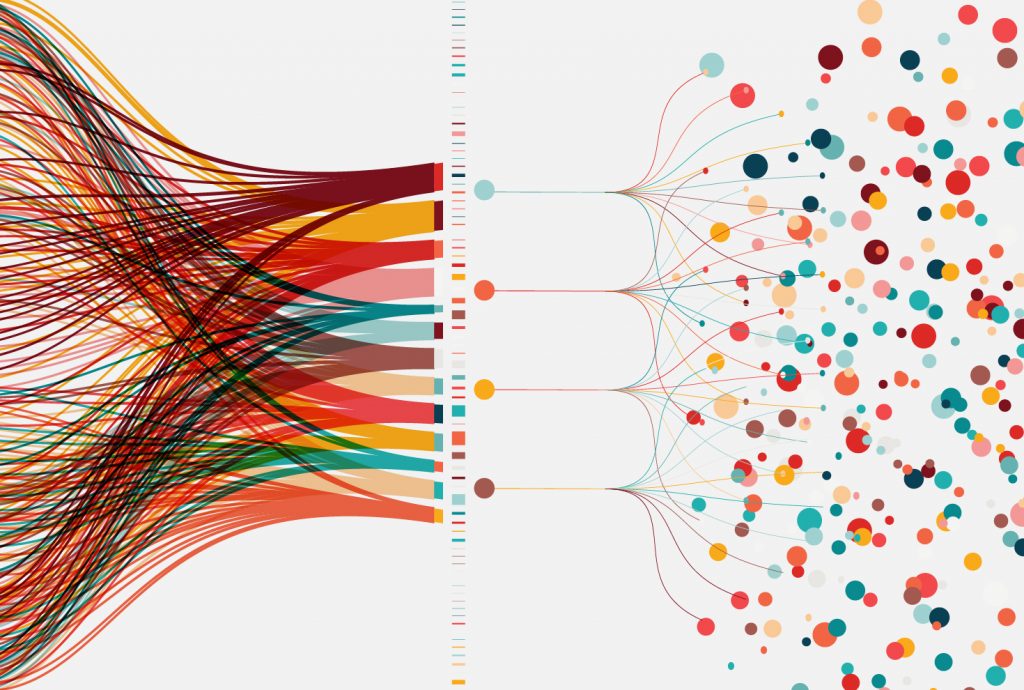New answer for big data? Algorithm brings order to chaos in one pass

Whenever a scientific experiment is conducted, the results are turned into numbers, often producing huge datasets. In order to reduce the size of the data, computer programmers use algorithms that can find and extract the principal features that represent the most salient statistical properties. But many such algorithms cannot be applied directly to these large volumes of data.
Reza Oftadeh, doctoral student in the Department of Computer Science and Engineering at Texas A&M University, advised by Dylan Shell, faculty in the department, developed an algorithm applicable to large datasets. It is a useful machine-learning tool because it can extract and directly order features from most salient to least.
“There are many ad hoc ways to extract these features using machine-learning algorithms, but we now have a fully rigorous theoretical proof that our model can find and extract these prominent features from the data simultaneously, doing so in one pass of the algorithm,” said Oftadeh.
Their paper describing the research was published in the proceedings from the 2020 International Conference on Machine Learning.
A subfield of machine learning deals with component analysis, the problem of identifying and extracting a raw dataset’s features to help reduce its dimensionality. Once identified, the features are used to make annotated samples of the data for further analysis or other machine-learning tasks such as classification, clustering, visualization and modeling based on those features.
The work to find or develop these types of algorithms has been going on for the past century, but what sets this era apart from the others is the existence of big data, which can contain many millions of sample points with tens of thousands of attributes. Analyzing these massive datasets is a very complicated, time-consuming process for human programmers, so artificial neural networks (ANNs) have come to the forefront in recent years.
As one of the main tools of machine learning, ANNs are computational models that are designed to simulate how the human brain analyzes and processes information. They are typically made of dozens to millions of artificial neurons, called units, arranged in a series of layers that it uses to make sense of the information it’s given. ANNs can be used in various ways, but they are most commonly used to identify the unique features that best represent the data and classify them into different categories based on that information.
“There are many ANNs that work very well, and we use them every day on our phones and computers,” said Oftadeh. “For example, applications like Alexa, Siri and Google Translate utilize ANNs that are trained to recognize what different speech patterns, accents and voices are saying.”
But not all features are equally significant, and they can be placed in order from most to least important. Previous approaches use a specific type of ANN called an autoencoder to extract them, but they cannot tell exactly where the features are located or which are more important than the others.
“For example, if you have hundreds of thousands of dimensions and want to find only 1,000 of the most prominent and order those 1,000, it is theoretically possible to do but not feasible in practice because the model would have to be run repeatedly on the dataset 1,000 times,” said Oftadeh.
To make a more intelligent algorithm, the researchers propose adding a new cost function to the network that provides the exact location of the features directly ordered by their relative importance. Once incorporated, their method results in a more efficient processing that can be fed bigger datasets to perform classic data analysis.
To verify the effectiveness of their method, they trained their model for an optical character recognition (OCR) experiment, which is the conversion of images of typed or handwritten text into machine-encoded text from inside digital physical documents, like a scanner produces. Once it’s trained for OCR using the proposed method, the model can tell which features are most important.

